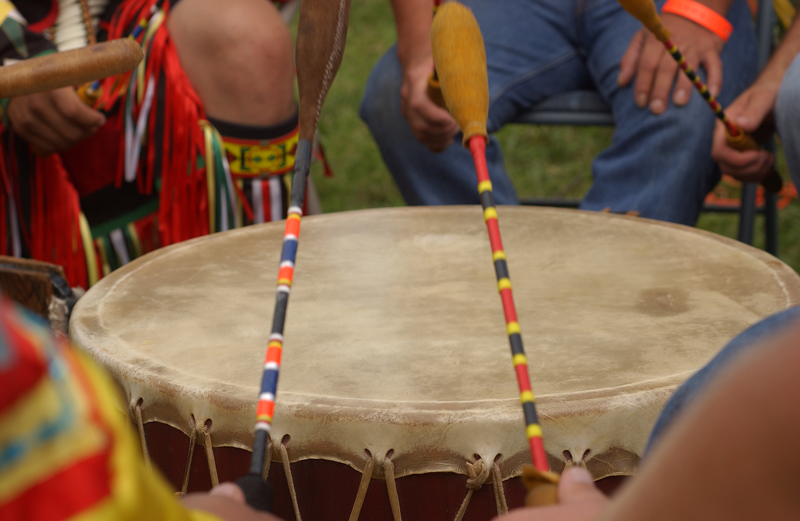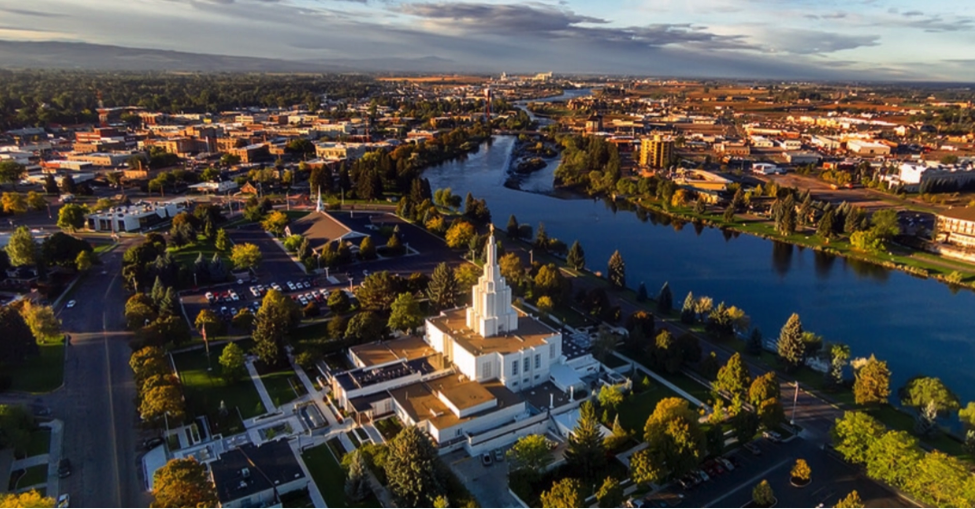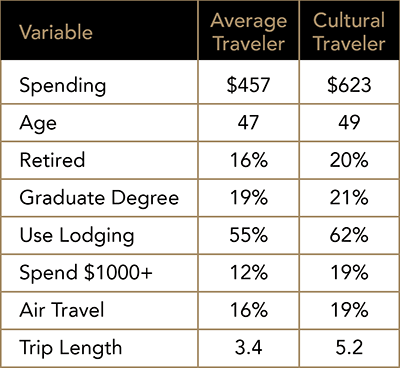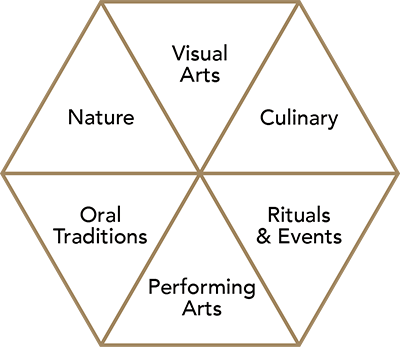
Cultural tourism. It sounds like a niche. In reality it is something different. Cultural tourism is a huge opportunity and a growing trend. According to the Travel Industry Association of America, roughly eighty percent of the 150,000,000+ adults who travel more than fifty miles from their homes can be considered “cultural tourists.” Thirty percent of adults state that specific arts or a cultural or heritage event influenced their choice of destination on their last trip. Cultural tourism and the interest in culture among travelers--particularly affluent, active, and frequent travelers-- is on the rise. According to UNWTO, global cultural tourism is forecast to increase by fifteen percent in the coming years.
Moreover, cultural tourism is very popular in many countries but is still somewhat nascent in the United States. This implies that even greater growth is possible in the United States as the traveler’s appetite for authentic cultural experiences in heritage, ethnicity, cuisine, crafts, arts, and music, continues to expand.
So for anyone involved in marketing a destination or “place-based” marketing, the question can no longer be should we, but rather how do we.
Definitions and Concepts
What exactly is “cultural tourism?” Before going too far, let us share some definitions.
The World Tourism Organization defines “cultural tourism” as trips with the main or concomitant goal of visiting sites and events with cultural and historical value. Cultural tourism includes a means or opportunity to enjoy past human accomplishments. In other words, “visiting such places creates admiration, national pride, and the rediscovery of the achievements of our ancestors.”
An important aspect of cultural tourism is intangible cultural heritage. This is defined as those practices, expressions, knowledge, and skills that communities and individuals recognize as part of their cultural heritage. Transmitted through generations and constantly recreated, they provide humanity with a sense of identity and continuity.
Another author has identified “Five Pillars” of cultural tourism. For the most part, these concepts suggest intended benefits to a DMO by employing a cultural tourism strategy. Collectively, they provide further insight into the potential success produced by a focus on not just the place or its history, but the indigenous and sometimes more allusive culture.
The Five Pillars of Cultural Tourism
 | ECONOMIC DRIVER A means of bringing greater economic impact to a broader array of stakeholders across the destination |
 | SOCIAL GOALS Using tourism dollars to benefit not just the large corporate interests, but also the underserved and previously overlooked constituents within the destination |
 | CULTURAL RENAISSANCE A way to preserve and emphasize the cultural uniqueness of a particular location |
 | RICH CONTENT An endless source of marketing content to communicate with more clarity and differentiation |
 | MARKETING DIFFERENTIATION Cultural tourism marketing creates great differentiation between competitive destinations |
When considering cultural tourism, there are often natural tensions which occur with respect to intended outcomes, program management, and the use of specific tourism assets. For instance, there is sometimes a lack of understanding with respect to the potential economic impact of increased tourism and who should benefit from the incremental revenues. Cultural tourism spreads the economic impact across many different consituents, especially those who typically do not gain from traditional destination marketing. There are often issues associated with preservation, maintenance cost, economic exploitation, privacy, and the specific strategies used to promote cultural assets. In fact, Cultural tourism helps preserve and promote the unique cultural aspects of a place, preventing them from being forgotten or forever lost. But despite the barriers, most civic, state, and regional leaders agree that cultural tourism is an increasing trend and one that provides return on investment for its practitioners. Given the often sensitive and politicized nature of cultural heritage, it makes sense to emphasize and frequently remind stakeholders of the benefits. In other words, that which is at stake.

Featured Blog: 4 Tips to Consider When Implementing an Influencer Marketing Campaign for your Destination
According to Nielsen, 92% of consumers say they trust earned media — or recommendations from individuals (friends, family, acquaintances, etc.) — over all other forms of advertising.
Read full post
Cultural Traveler Demographics
From our experience with destination marketing we’ve developed a sophisticated and nuanced understanding of the cultural traveler that we use to develop cultural tourism strategies. Below are a few generalizations which transcend specific places and population groups.
- The market is growing. The cultural traveler is a sub-set of the leisure travel market. Both are growing as the baby boom population continues to reach retirement age and as generation xers and millennials seek ever-more authentic and immersive travel experiences.
- The market, while skewing slightly older than the general population, is getting younger. Given the relatively large size of the millennial cohort, their relative wealth, and their travel propensity, the market is getting younger and has become less dependent on the retiree.
- The market is well-educated and technologically savvy. Travelers of all ages seek and attain information prior to making detailed plans and use technology--primarily the internet and mobile devices--to implement their plans.
- Finally, cultural travelers are staying longer and are more likely to travel by air.

Although definitions of the cultural travel market vary to some degree, most experts include creative arts, history, and indigenous culture as key aspects of cultural tourism or heritage tourism. Using a set of activities surveyed by the U.S. Travel Association “Domestic Market Report,” one can gain a perspective of the significance of these activities within the context of a larger set of tourism drivers. Dining, shopping, and entertainment are the perennial, top-three tourism drivers, with roughly seventy percent of all tourists participating. While not directly associated with cultural tourism, the first opportunity is often to create more cultural context for traditional dining, shopping, and entertainment experiences.
As most destination marketing professionals know, these are the mainstay and mainstream activities that create room nights, hotel tax revenue, and generally drive the local economy. The problem is that they do not serve to distinguish or differentiate one community from another based on any proprietary feature or set of assets. They are almost always the result of national or local investment rather than indigenous history or a differentiated culture.

The exception to this of course is when a destination’s primary heritage is around the dining, shopping, or entertainment industries, for instance the “Theater District” in New York or Chicago’s “Magnificent Mile” or Minneapolis’ “Mall of America.” A more typical scenario is that a particular destination continues to evolve and gradually becomes more attractive to the national, branded stores, restaurant chains, and entertainment venues. As population demographics and tourism traffic support more and more branded concepts, the destination increases its tourism volume, or the percentage of its tourism revenue, derived from the “big three” aforementioned activities.
The next problem is that this also diminishes the destination’s sense of place, historicity, and differentiation based on unique cultural assets. While every community covets a discount mall, a Nordstrom’s, and a Capital Grill, there is an unintended consequence as differentiation is incrementally diluted and every place looks and feels a little more like every other place.
As the table below indicates, several other activities are more closely associated with cultural tourism. Touring and site seeing is in many cases directly related to cultural and/or heritage and four other activities from the survey are found within most definitions of cultural tourism. Collectively, these “middle-of-the-pack” activities account for about twenty percent of all tourism activity. And, again, they are the activities that are typically the most capable of distinguishing or branding a destination.


Featured Blog: The Secret to Driving Local Business (is Working with Other Local Businesses!)
On Main Street, USA, one can barely walk a block without being overwhelmed by the fiery glow of neon lights, the dazzling display of sign-spinners, or the sound of special offers whizzing by one’s ears. In the battle for Main Street, it is a seemingly endless war between local businesses fighting for the attention of the consumers – but it does not have to be that way.
Read full post
The Trend Toward Post-Modernism
Of equal significance is the trend driving the trend. The fact is, today’s interest in cultural tourism is really a manifestation of a larger and even more fundamental trend: post-modernism. Culturally, we crave that which is more personally relevant and less packaged or mass produced. For the fifty years following World War II, our economy has pursued a strategy largely defined by modernism. An emphasis on production, efficiency, the modern corporation, and, of course, mass marketing. General Motors, IBM, McDonalds, Wal-Mart, and, in the travel and destination industry, Disney. From industry-to-industry, we’ve homogenized it. Yes, we have achieved improved convenience and attainability, and we’ve hit that price point. The trade-off… America has morphed into “Generica”. Some would say: no small sacrifice. The places we’ve loved, or at least been curious about, have lost their specialness. They all look a little more like each other. And for what? A discount mall? Shame on us.
Fortunately, there is a counter-trend and a generational cohort really driving, if not insisting on, the change. It’s called post-modernism. The post-modern aesthetic has everything to do with authenticity and personal meaning. We no longer settle for the ring tone that everyone has (remember it?) but instead download something that somehow communicates something about us. Using the telephone as an example, there are many different sizes, shapes, storage capabilities, brands, and apps. There is a mega-industry devoted to customization of the protective case and another one for the ring tones. The point is, we want it our way (not their way).
The unavoidable truth is that mass production has produced a counter-trend--a preference for its antithesis. Artisanal products, craft products, hand-made, and in the travel space, authentic and immersive experiences that you can’t find just anywhere.
And there are a host of sub-trends: social media, curation, shop-small, buy-local, mass customization, etc. And the specific means by which the travel industry is tapping this macro-trend is called: cultural tourism. It is a way to confer and achieve unique experiences. It is more about truly being somewhere than just going somewhere. It is immersive, experiential, educational, and soul-cleansing. Hey, Dad, are we there yet?
The Broad Perspective and The Simple Premise
1. Handicrafts and visual arts
2. Gastronomy and culinary
3. Social practices, rituals, and festive events
4. Music and performing arts
5. Oral traditions and expressions
6. Knowledge and practices concerning nature
They consider these “pivotal areas” to be the basis of cultural tourism success.

To the extent a local planning or leadership team can discover, develop, package, and promote these six aspects of local culture, a destination can build a more robust tourism program. The obvious implication is that most destinations do not necessarily have an even or symmetrical understanding across the six areas. Some areas are well-developed strengths while others are not well understood and/or represent latent opportunities at best. So, optimization across the six categories is the hallmark of an effective program. And, program optimization depends on a process.
Our premise is two-fold: First, tourism promotion is more effective when the destination is connected to a strong branding idea. Brands create interest, relevancy, and differentiation. A set of assets are more easily understood and remembered when they are associated with a brand idea. Second, local culture and the branding idea that supports it are more discovered than they are created. Therefore, a discovery process is necessary to understand and gain consensus around a set of marketable ideas.
Our process is called Culture ContextTM and it depends on a thorough understanding of the local culture and the context in which a particular destination competes. That context is defined by three domains: 1) the place; 2) the people; and 3) the peer group. We sometimes refer to these as the “three P’s of cultural tourism marketing”. Through an exhaustive but efficient process we collect information from each of these domains. This typically includes interviews with community stakeholders and influencers, a brand audit, a peer group communications analysis, tourism market research, and concept testing.
twenty-five local stakeholders are assembled to help build the inventory and then evaluate the areas for new opportunities.

In a typical workshop, over one-hundred different opportunity areas are identified and then scored based on the three strategic criteria. A second evaluation step is then added. Each idea is sorted based on its ROI using our Visitor Experience Enhancement Model. This technique locates each highly scored opportunity area on a matrix defined by two axes. The first axis is the investment axis; the second is the impact axis. The reasoning is that a set of opportunities are variable in terms of the degree of investment required to create impact. Some ideas are inherently higher or lower investment and, conversely, create higher or lower impact.

In addition to building consensus around high priorities experiences, this tool leads to more concrete product offers and enhanced visitor experiences. Moreover, it provides the basis for sequencing the launch of new experiential products and the development of a plan to resource different opportunity areas.
In summary, this two-step approach in which ideas are first generated and scored and then sorted provides the following benefits:
- It generates new thinking and ideas;
- It creates focus and builds consensus within a group of key stakeholders;
- It sorts potential ideas into categories based on potential impact and investment requirements;
- It creates a basis for marketing planning;
- It identifies and prioritizes the destination's cultural assets with the known traveler segmentation and preferences;
- Finally, it insures that cultural products are “on-brand” from a strategic perspective.

Featured Blog: Cultural Creative: The Islands of Palau
The Palau Visitors Authority engaged our services to express the extraordinary history, culture, world-class diving, and exotic flora and fauna in its visitors guidebook in English and Japanese.
Read full post
Conclusions and Guidelines
In summary, a set of conclusions has been offered by the World Tourism Organization with respect to planning for cultural tourism.
 | DEFINE TOURISM PRODUCTS The process above is one way to take the sometimes historic, abstract, or less-well-defined, and transform it into a revenue generator. There are many tactics associated with this strategy which include:
|
 | IDENTIFY STAKEHOLDERS AND ESTABLISH PARTICIPATION MECHANISMS Our approach is an inclusive approach which has participation “designed-into” the process. Through a series of surveys, workshops, and interactive tools, participants participate in a vigorous but organized way. |
 | MAINTAIN AUTHENTICITY The commercialization of living culture poses challenges and threats to the viability of that culture. Care must be taken so that the product is not overly commercialized, commodified, or contaminated beyond recognition. The needs and requirements of the “host participant” must always be carefully considered. |
 | CREATE PARTNERSHIPS Many opportunities for partnerships are usually available and, in fact, required to be successful. These typically include local and non-local commercial enterprises, government, NGOs, tour promotions operators, and the local business community. People implement what they help create. |
 | SETTING “LIMITS OF ACCEPTABLE CHANGE” There are often tensions between the host stakeholder and the tour promotor or private business. A dialog is imperative and all participants must operate with a good deal of sensitivity to insure that “win-win” situations are created and that all participants are fairly represented and compensated. Leadership should not be put-off or surprised when they find themselves in negotiations with stakeholders with different goals or underlying values. |
 | BALANCE EDUCATION & ENTERTAINMENT The best experiences strike a balance between education and entertainment and often education through entertainment. Increasingly, the post-modern mindset desires immersive, hands-on experiential learning. The world is a stage. |
 | SEEK LONG-TERM RATHER THAN SHORT-TERM GAIN The key here is to create a program that is sustainable and that provides enduring benefits to the community. Programs which exploit local communities and their cultures usually sacrifice long-term viability for short-term gain. They often damage the environment, create conflict among stakeholders, and frequently do little to create measureable economic development. |
 | MONITOR AND MEASURE Design measurement into program implementation. Every program begins with some skepticism and a few wrinkles that, once discovered, can usually be ironed-out. Perhaps even more importantly, local leadership should understand participation rates, participation dynamics, demographics, and program ROI. Normally, many options or combinations of measures are available to assess program success. |
SOURCES:
“Cultural Tourism Overview,” 2004.
Travel Industry Association of America, 2013.
“Study on Tourism and Intangible Cultural Heritage,” World Tourism Organization, 2011.
UNESCO Convention of Safeguarding Cultural Heritage, 2003.
U.S. Travel Association Domestic Travel Market Report.
U.S. Travel Association Domestic Travel Market Report.
“Study on Tourism and Intangible Cultural Heritage,” World Tourism Organization, 2011.
“Arts & the Economy,” National Governor’s Association, 2006.

